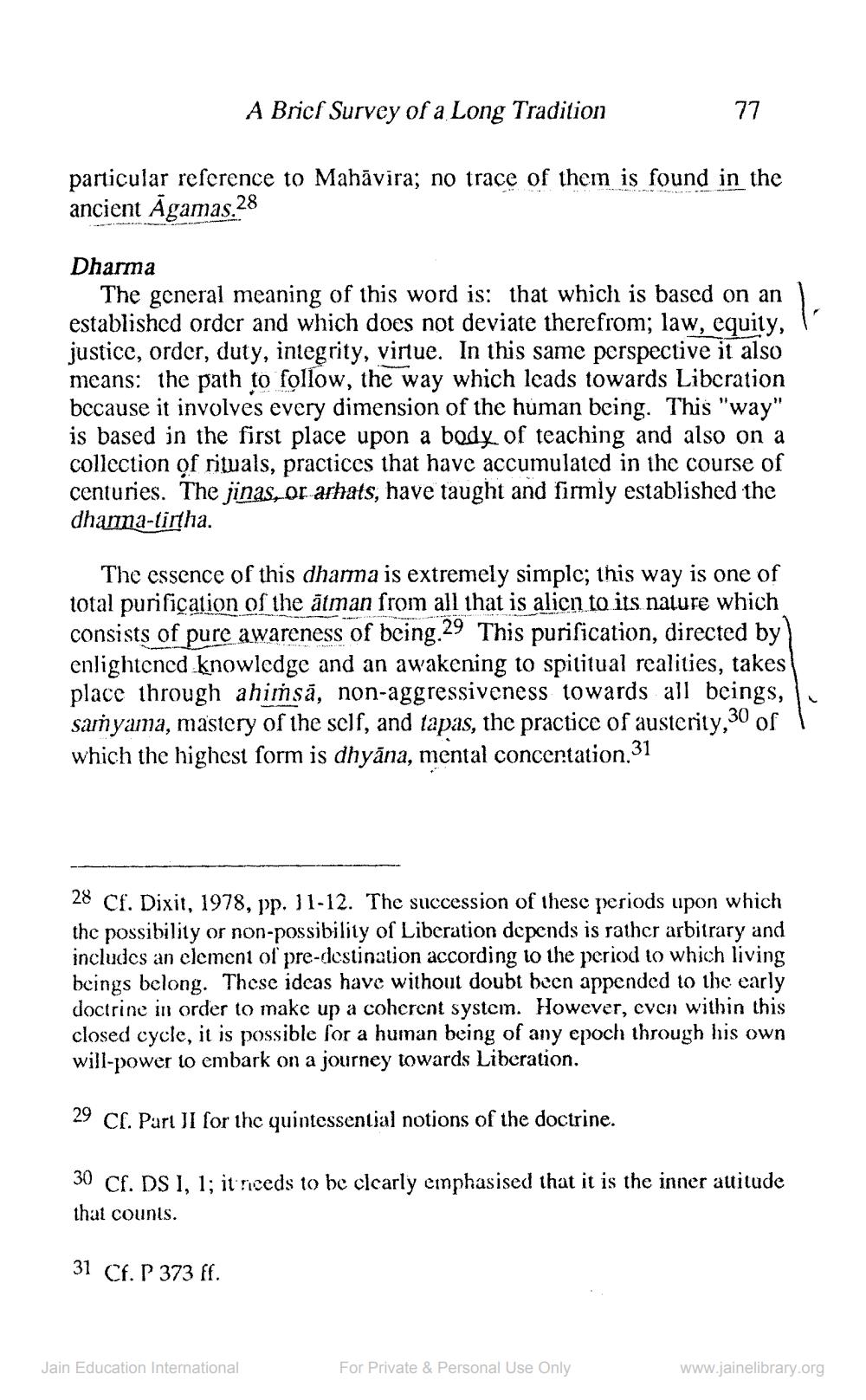________________
A Brief Survey of a Long Tradition
particular reference to Mahāvira; no trace of them is found in the ancient Agamas.28
Dharma
The general meaning of this word is: that which is based on an established order and which does not deviate therefrom; law, equity, justice, order, duty, integrity, virtue. In this same perspective it also means: the path to follow, the way which leads towards Libcration because it involves every dimension of the human being. This "way" is based in the first place upon a body of teaching and also on a collection of rituals, practices that have accumulated in the course of centuries. The jinas, or arhats, have taught and firmly established the dharna-tirtha.
The essence of this dharma is extremely simplc; this way is one of total purification of the atman from all that is alien to its nature which consists of pure awareness of being 29 This purification, directed by enlightened knowledge and an awakening to spilitual realities, takes place through ahiṁsā, non-aggressiveness towards all beings, samnyama, mastery of the self, and tapas, the practice of austerity,30 of which the highest form is dhyāna, mental concertation.31
28 Cf. Dixit, 1978, pp. 11-12. The succession of these periods upon which the possibility or non-possibility of Liberation depends is rather arbitrary and includes an element of pre-destination according to the period to which living beings belong. These ideas have without doubt been appended to the early doctrine in order to make up a coherent systein. However, even within this closed cycle, it is possible for a human being of any cpoch through his own will-power to embark on a journey towards Liberation.
29 Cl. Paru Jl for the quintessential notions of the doctrine.
30 Cf. DS 1, 1; it needs to be clearly emphasised that it is the inner attitude that counts.
31 Cf. P 373 ff.
Jain Education International
For Private & Personal Use Only
www.jainelibrary.org




